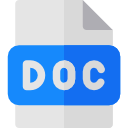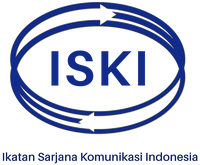Social Distance Into Factual Information Distance about COVID-19 in Indonesia Whatsapp Groups
DOI:
https://doi.org/10.31315/jik.v18i3.3684Keywords:
COVID-19, Information Gaps, WhatsApp Group in IndonesiaAbstract
WhatsApp has become a forum for communication and information related to the COVID-19 pandemic, so there are messages that ignore the identification and validation of news facts. This creates an information gap on WhatsApp. This study aims to analyze the form of information gaps related to information on the COVID-19 pandemic in Indonesia shared by WhatsApp group users. This research uses quantitative research methods, with data collection techniques through documentation of text messages and pictures, as well as the results of a survey conducted on WhatsApp group users. The results of this research indicate that the information gap in reporting the COVID-19 pandemic occurs due to information gaps in the form of uncertainty, strong beliefs and opportunities to choose information and decisions to choose information values. The substance of this research contributes in the form of new policy recommendations in assessing information gaps in social media by validating the truth of the facts in each message received and shared to another users.
References
Abdullah, I. (2020). COVID-19: Threat and Fear in Indonesia. Psychological Trauma: Theory, Research, Practice, and Policy, 12(5), 488. https://doi.org/10.1037/tra0000878
Anwar, F. (2017). Perubahan dan Permasalahan Media Sosial. Jurnal Muara Ilmu Sosial, Humaniora, Dan Seni, 1(1), 137. https://doi.org/10.24912/jmishumsen.v1i1.343
Apuke, O. D., & Omar, B. (2020). Fake news and COVID-19: modelling the predictors of fake news sharing among social media users. Telematics and Informatics, 56, 101475. https://doi.org/10.1016/j.tele.2020.101475
Astarilla, L., & Warman, D. (2017). The Effect of Whats App in Blended Learning on English as Foreign Language (EFL) Undergraduate Students’ Reading Comprehension. In Fifth International Seminar on English Language and Teaching (ISELT 2017). Atlantis Press. https://doi.org/10.2991/iselt-17.2017.14
Ben-Haim, Y. (2004). Uncertainty, probability and information-gaps. Reliability Engineering and System Safety, 85(1-3), 249-266. https://doi.org/10.1016/j.ress.2004.03.015
Bungin, & Burhan. (2009). Sosiologi Komunikasi: Teori, Paradigma, dan Diskursus Teknologi Komunikasi di Masyarakat. Kencana Prenada Media Group.
Cheng, Y., Luo, R., Wang, K., Zhang, M., Wang, Z., Dong, L., … Xu, G. (2020). Kidney impairment is associated with in-hospital death of COVID-19 patients. MedRxiv. https://doi.org/10.1101/2020.02.18.20023242
Cinelli, M., Quattrociocchi, W., Galeazzi, A., Valensise, C. M., Brugnoli, E., Schmidt, A. L., … Scala, A. (2020). The COVID-19 social media infodemic. Scientific Reports, 10(1). https://doi.org/10.1038/s41598-020-73510-5
Cohen, S. (2011). Folk devils and moral panics: The creation of the Mods and Rockers. In Folk Devils and Moral Panics: The Creation of the Mods and Rockers. https://doi.org/10.4324/9780203828250
Darmawan, D., Miharja, D., Waluyajati, R. S. R., & Isnaeniah, E. (2020). Sikap Keberagamaan Masyarakat Menghadapi Wabah COVID-19. Religious: Jurnal Studi Agama-Agama Dan Lintas Budaya, 4(2), 115–124. https://doi.org/10.15575/rjsalb.v4i2.8596
González-Padilla, D. A., & Tortolero-Blanco, L. (2020, July 1). Social media influence in the COVID-19 pandemic. International Braz J Urol, 46, 120–124. Brazilian Society of Urology. https://doi.org/10.1590/S1677-5538.IBJU.2020.S121
Juditha, C. (2018). Hoax Communication Interactivity in Social Media and Anticipation (Interaksi Komunikasi Hoax di Media Sosial serta Antisipasinya). Journal Pekommas, 3(1), 31. https://doi.org/10.30818/jpkm.2018.2030104
Kaplan, A., & Mazurek, G. (2018). Social media. In Handbook of Media Management and Economics: Second Edition (pp. 273–286). Taylor and Francis. https://doi.org/10.4324/9781315189918
Kominfo. [DISINFORMASI] Wudhu Bisa Hancurkan Virus Corona, 02 Februari 2020, <https://kominfo.go.id/content/detail/24134/disinformasi-wudhu-bisa-hancurkan-virus-corona/0/laporan_isu_hoaks> [accesed, 19 March 2020]
Kominfo. [HOAKS] Penyembuhan Virus Corona dengan Bawang Putih, 28 Januari 2020,. <https://kominfo.go.id/content/detail/24029/hoaks-penyembuhan-virus-corona-dengan-bawang-putih/0/laporan_isu_hoaks> [accesed, 19 March 2020]
Lai, C.-C., Shih, T.-P., Ko, W.-C., Tang, H.-J., & Hsueh, P.-R. (2020). Ards COVID19. International Journal of Antimicrobial Agents, 7. https://doi.org/10.1016/j.ijantimicag.2020.105924
Mahmuddin, & Halik, A. (2019). The use of social media as a source of religious knowledge among doctors in Makassar, Indonesia. Jurnal Komunikasi: Malaysian Journal of Communication, 35(4), 272-285. https://doi.org/10.17576/JKMJC-2019-3504-17
Rahadi, D. R. (2017). Perilaku Pengguna Dan Informasi Hoax Di Media Sosial. Jurnal Manajemen dan Kewirausahaan, 5(1), 58-70. https://doi.org/10.26905/jmdk.v5i1.1342
Rochmyaningsih, D. (2020). Indonesia finally reports two coronavirus cases. Scientists worry it has many more. Science, 1. https://doi.org/10.1126/science.abb5653
Update Covid-19, Kasus Baru Bertambah 114 Orang, 31 March 2020. <https://databoks.katadata.co.id/datapublish/2020/03/31/update-covid-19-kasus-baru-bertambah-114-orang-selasa-313> [accesed, 4 April 2020]
Verity, R., Okell, L. C., Dorigatti, I., Winskill, P., Whittaker, C., Imai, N., … Ferguson, N. (2020). Estimates of the severity of COVID-19 disease. MedRxiv, 2020.03.09.20033357. https://doi.org/10.1101/2020.03.09.20033357
WHO Coronavirus Disease COVID-19. (January 21 – February 20, 2020). <https://covid19.who.int/> [accesed, 2 April 2020]
Worldometer, Coronavirus Cases Report, 31 March 2020, <https://www.worldometers.info/coronavirus/coronavirus-cases/> [accesed, 2 April 2020]
Yunita, N. (2020). Penyebab, Asal Mula, dan Pencegahan Virus Corona di Indonesia. Detik.
Downloads
Published
Issue
Section
License
Authors who publish articles in this journal agree to the following terms:
- Copyright remains with the author and gives rights to the Jurnal Ilmu Komunikasi as the priority to publish the article with an Creative Commons Atribusi 4.0 Internasional License, which allows the article to be shared with acknowledgment of the author of the article and this journal as the place of publication.
- Authors can distribute the publication of their articles on a non-exclusive basis (for example: on university repositories or books) with notification or acknowledgment of publication in the journal Option
- Authors are allowed to post their work online (for example: on personal websites or in university repositories) before and after the submission process (see The Effect of Open Access)
Jurnal Ilmu Komunikasi is licensed under a Creative Commons Atribusi 4.0 Internasional License.










